Next Day Delivery Available
Expert Tips for DIY Washing Machine Repair
Is your washing machine drum not spinning? Or perhaps there’s a foul odour coming from the machine? Appliance breakdown happens to the best of us, but that doesn’t make it any less frustrating, and in some cases, painful – if you’ve ever had to hand wash a pair of jeans, you’ll know exactly what we’re talking about. Luckily for you, the Ransom Spares appliance repair experts, Tony and Kevin, are here to help. They’ve spent the last 10 years honing their skills in the mountains of Peru, under the guidance of a world-renowned master. OK, that last part wasn’t true – but they are highly trained experts, who can advise you on how to fix a huge range of appliance problems. Here are Tony and Kevin’s top 10 expert tips for DIY washing machine repair: 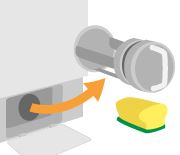
Check and clean your drain pump filter on a regular basisEver wondered what happens to all the things you forget to take out of your pockets before putting clothes in the wash? (On a side note, we really do recommend that you check pockets first, because washing machines don’t like eating coins). Most front load washers have a drain pump filter, which can normally be accessed from the front of a machine, behind a small flap. It’s important to make sure you regularly clean this filter, to avoid problems, such as a longer than usual cycle time. 
When not in use, leave the door of your washing machine ajarLack of air circulation can result in a build-up of mould and mildew, which will create a bad smell. Leaving the door ajar improves air circulation, helping to combat this build-up. 
Make sure you deal with a smelly machineA pongy machine could be a sign of a build-up of mould, mildew, limescale or detergent (check your door seal for signs of mould). In these circumstances, you should do a service wash, using limescale and detergent remover. 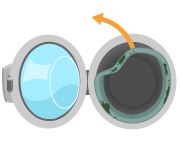
Replace mouldy door sealsIf your washing machine is really smelly, replace the door seal. This is a surprisingly easy job and follows a similar procedure, regardless of model. Watch our ‘How to Replace a Washing Machine Door Seal’ tutorial, for more information. 
Clean the door glass bowlThe door glass bowl can accumulate a build-up of powder and limescale, so it’s important to keep it clean. This will also help to ensure that a good seal is made when the door is closed for use. 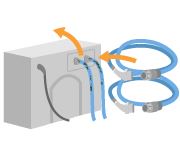
Replace the rear water supply hoses every five yearsThis is recommended by manufacturers for peace of mind. After years of use, rubber hoses can potentially spring a leak, which could result in some serious water damage. Replacing them is pretty simple – unplug the machine, turn off the water supply valves and then disconnect the old hoses from the valves. It’s then just a case of fitting the new water supply hoses. 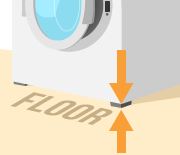
Keep the machine close to the floorThe closer the machine is to the floor, the less it will vibrate, and consequently, it will be less noisy.
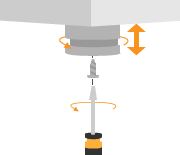
Position the legs correctlyYou should position the washing machine legs (what the machine rests on) at the height you want, ensuring they are all level, and then tighten the lock nut against the body of the machine, so that the legs cannot rotate. Some models also have adjustable legs at the rear. Again, this will prevent the washing machine from excessively moving around, reducing the level of noise. 
Clean out the fabric softener dispenserLiquid fabric softener is known to clog up the dispenser, so you need to give it a regular clean. Use a damp cloth or toothbrush and hot water to clean out the dispenser, making sure you remove the syphon and clear any holes that lead to the rear of the dispenser housing. 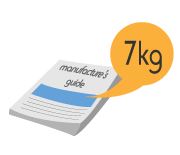
Always follow the manufacturer’s guide for appropriate load sizesIt’s tempting to shove in a few extra items on top of an already full load. However, oversized loads will cause the washing machine to become unbalanced, which in some cases will stop the washing machine mid-cycle. It’s also likely that problems with worn bearings and suspension will occur over time. A broken-down washing machine can be a pain, but with a little expert guidance, there are lots of repairs that you can carry out yourself. Find help for a particular problem with your washing machine, with an easy to follow washing machine tutorial video for step- by-step repair advice. |
Category: Articles, News & Tips







 By Lee Gilbert
By Lee Gilbert On 18th Mar 2015 at 12:51
On 18th Mar 2015 at 12:51

No Comments